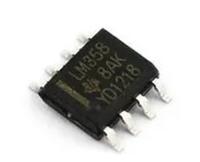Sharma Film Capacitors
PERFORMANCE CHARACTERISTICS
Figure 2.1A
ELECTRICAL - BASIC PARAMETERS
1.1 RATED CAPACITANCE
The nominal or rated value of capacitance is measured at 25 °C in an measuring bridge with 1K Hz
source, free of harmonics. Please refer to relevant series for the range of capacitance value covered.
Capacitance is frequency and temperature dependent. The variation pattern of capacitance with
temperature and frequency is explained in sections 2.1 and 2.2.
1.2 CAPACITANCE TOLERANCE
The permitted variation of actual value from the nominal value is termed the tolerance. The tolerance
is expressed in percentage. The standard tolerances for plastic film capacitors are ±5% (J), ±10% (K)
and ±20% (M).
Polystyrene
Capacitance Change Vs. Temperature
1.3 RATED VOLTAGE
The voltage at which the capacitor can operate continuously up to a temperature of 85 °C (unless
otherwise specified) is the rated voltage. As this is a critical parameter for choosing a capacitor, the
case sizes are listed in a matrix of capacitance value and rated voltage.
Figure 2.1B
1.4 CATEGORY VOLTAGE
The maximum voltage that may be applied continuously over the temperature range is termed the
category voltage. This is same as the rated voltage up to 85 °C unless otherwise specified in the
climactic category of the product. Above 85 °C a derating has to be applied depending upon the
dielectric.
1.5 OPERATING TEMPERATURE
This is the temperature range with in which the capacitor can function as specified in the climactic
category. Please refer to relevant sections for derating above the temperature at which the full rated
voltage can be applied.
Polyester
Capacitance Change Vs. Temperature
1.6 DISSIPATION FACTOR
This is the measurement of tangent of loss angle (tan d) and is expressed as a percentage.
Measurement of dissipation factor is carried out at 1 K Hz. or 10 K Hz. as specified in the data sheet
of the relevant series at 25 °C. Dissipation factor is temperature and frequency dependent. The
nature of variation of dissipation factor with temperature and frequency for different dielectric are
explained in Figures 2.3A to 2.3C and 2.4A to 2.4C.
Figure 2.1C
1.7 INSULATION RESISTANCE
Insulation Resistance is the electrical resistance offered by the capacitor. The Insulation Resistance
is measured directly in Mega Ohms where as for higher capacitance values it is expressed in seconds
as the product of M Ohm and µF.
1.8 PULSE RISE TIME
Polypropylene
Capacitance Change Vs. Temperature
The pulse rise time or dv/dt rating is the capability of the capacitor to handle rapid changes in voltage
or pulse. This is expressed in terms of Volts per µseconds. The dv/ dt rating of a capacitor depends
upon the dielectric as well as the design and construction of the capacitors. The dv/dt values of
different types of capacitors are listed in the corresponding data sheets of the capacitors.
Figure 2.2A
ELECTRICAL - EFFECTS AND RELATIONS
2.1 TEMPERATURE DEPENDENCE OF CAPACITANCE
Capacitance of plastic film capacitors vary with temperature. However the pattern of variation is
different for different plastic film dielectrics such as Polystyrene, Polyester and Polypropylene. The
The variation patterns for these dielectrics are shown in figure 2.1A, 2.1B and 2.1C. The rate of
change of capacitance with temperature is termed the Temperature Coefficient. The nominal values
of temperature coefficient for different dielectrics are shown below.
DIELECTRICS
POLYSTYRENE
-150 ppm
POLYESTER
+400 ppm
POLYPROPYLENE
-200 ppm
TEMPERATURE
COEFFICIENT
Polystyrene
Capacitance Change Vs. Frequency
2.2 FREQUENCY DEPENDENCE OF CAPACITANCE
Capacitance reduces with increase in frequency. The
variation pattern for different dielectrics are shown in
figure 2.2A, 2.2B and 2.2C.
Figure 2.2C
Figure 2.2B
2.3 TEMPERATURE DEPENDENCE OF
DISSIPATION FACTOR
The dissipation factor varies with temperature. Each
dielectric follows a unique variation pattern. The variation
pattern for different dielectrics are shown in figure 2.3A,
2.3B and 2.3C.
Polyester
Capacitance Change Vs. Frequency
Polypropylene
Capacitance Change Vs. Frequency










 一文带你了解?DB3二极管好坏判断、参数信息、替代推荐
一文带你了解?DB3二极管好坏判断、参数信息、替代推荐

 LM358DR数据手册:引脚说明、电气参数及替换型号推荐
LM358DR数据手册:引脚说明、电气参数及替换型号推荐

 OP07CP数据手册解读:引脚信息、电子参数
OP07CP数据手册解读:引脚信息、电子参数

 TIP42C资料手册解读:参数分析、产品特性
TIP42C资料手册解读:参数分析、产品特性
